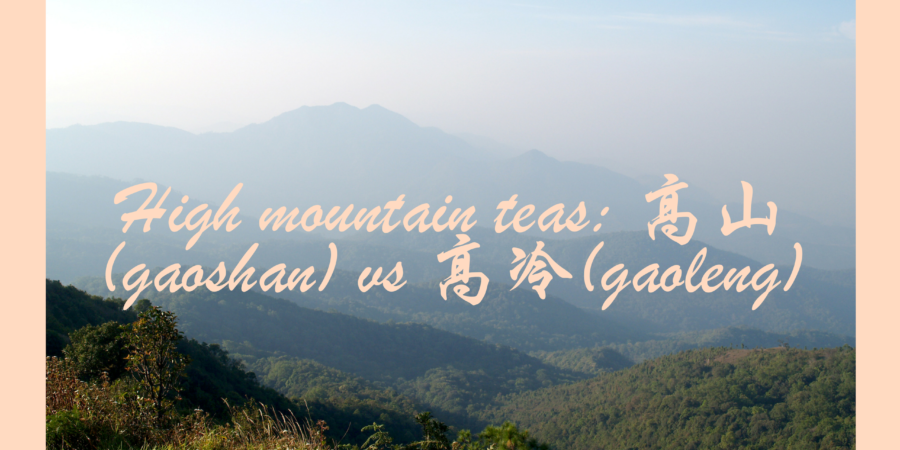When I went for the introductory class on oolong tea, I learnt something pretty interesting about High Mountain Teas: they can be further divided into two different categories. I’ve only ever heard of high mountain Tea as one type of tea, so the idea that they could be further divided was new to me.
So high mountain oolongs can be divided into two types: 高山茶 (gao shan cha; literally “high mountain tea”) and 高冷茶 (gao leng cha; literally “high cold tea”). In terms of altitude, gao shan cha should be at least 1000m above sea level, while gao leng cha should be at least 2000m above sea level. Da Yu Lin, Lishan, and Fu Shou Shan teas are all examples of gao leng cha, although sadly, Da yu lin is no more.
It shouldn’t come as a surprise, but climate also plays a huge role the making of tea: the 东北季风 (dong bei ji fen) or northeast monsoon is responsible for the milky taste in jinxuan. That’s also why Darjeeling teas are so prized – they grow on pretty high mountains as well, which gives them their unique flavour when made into teas.
Apart from the altitude difference, the two teas are very similar. Both teas grow in high altitude climates, where the cold weather means that the teas take a longer time to grow. This gives them more flavour and smaller leaves (if you see an oolong that claims to be a high mountain tea but has large leaves, you should be suspicious).
The differences between a gao shan cha and gao leng cha are mainly in their taste. In the workshop, I was taught that gao shan cha will have a 冷香 (leng wei) while gao leng cha will have a leng wei and 茶蛋白味 (cha dan bai wei).
The million dollar question is: What is leng wei and what is dan bai wei?
Translated literally, leng wei means “cold taste” and dan bai wei means “protein taste” (“dan bai” meaning egg white). I googled for a more precise meaning, but couldn’t find anything specific. I did find a rather interesting facebook post that claims dan bai wei has been seen as an inferior sort of taste, which is contradictory to what I learnt. But more interestingly, the post seems to link the protein taste to the grassy green taste, and that this protein “dan bai” taste is a weaker form (if I understand the Chinese correctly – it’s in traditional Chinese, while I learnt simplified Chinese in school).
I did ask both Gary and Mr. Chua how they would described the two tastes, but the two of them told me that this is something that you have to experience for yourself. It makes sense – taste is such a subjective thing and even if I do my best to describe it, it may not translate to you in the way I want it to. I had the chance to try both gao shan and gao leng oolongs, and I find that gao leng oolongs are more flavourful. But as for the leng wei and the dan bai wei, I have not been able to find and articulate the difference yet; all I know is that these teas are different.
If you’ve tried these two teas, what did you think of them? Did you find a difference?
P.s. This is a piece of trivia I forgot to put in my previous post. I learnt a new word in the workshop: 骨水 (gu shui). It translates to “bone water” and it refers to the water in the stems of the tea leaves. You do not want water there – it’s believed to be harmful to your body.

Hey ! Nice Post. I love Oolong tea. I used to start my day with a cup of Oolong tea Bags UK